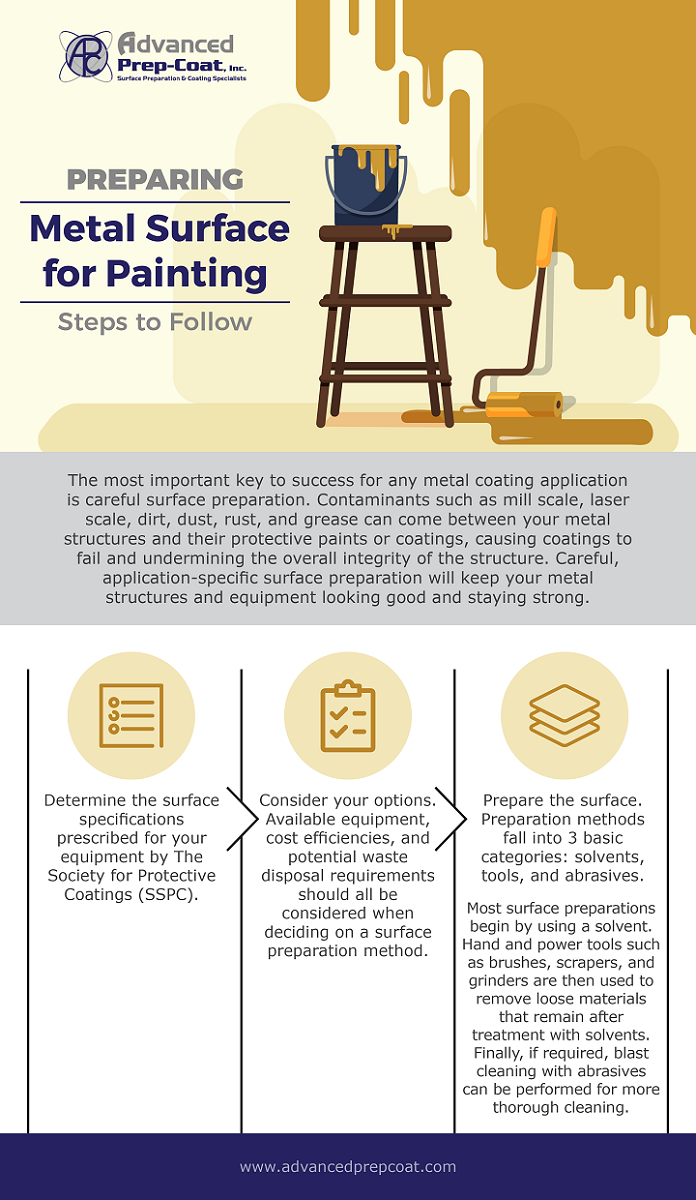Preparing Metal Surface for Painting: Steps to Follow
September 12, 2019

The most important key to success for any metal coating application is careful surface preparation. Contaminants such as mill scale, laser scale, dirt, dust, rust, and grease can come between your metal structures and their protective paints or coatings, causing coatings to fail and undermining the overall integrity of the structure. Careful, application-specific surface preparation will keep your metal structures and equipment looking good and staying strong.
Step 1: Determine the surface specifications prescribed for your equipment by The Society for Protective Coatings (SSPC).
Step 2: Consider your options. Available equipment, cost efficiencies, and potential waste disposal requirements should all be considered when deciding on a surface preparation method.
Step 3: Prepare the surface. Preparation methods fall into 3 basic categories: solvents, tools, and abrasives. Most surface preparations begin by using a solvent. Hand and power tools such as brushes, scrapers, and grinders are then used to remove loose materials that remain after treatment with solvents. Finally, if required, blast cleaning with abrasives can be performed for more thorough cleaning.
Advanced Prep Coat, Inc.
41C Sutton Lane
Worcester, MA 01603
63 School Street
Putnam, CT 06260
800-230-2937
- Connecticut
- Maine
- Massachusetts
- New Hampshire
- New York
- Rhode Island
- Vermont
- and the entire Northeast
